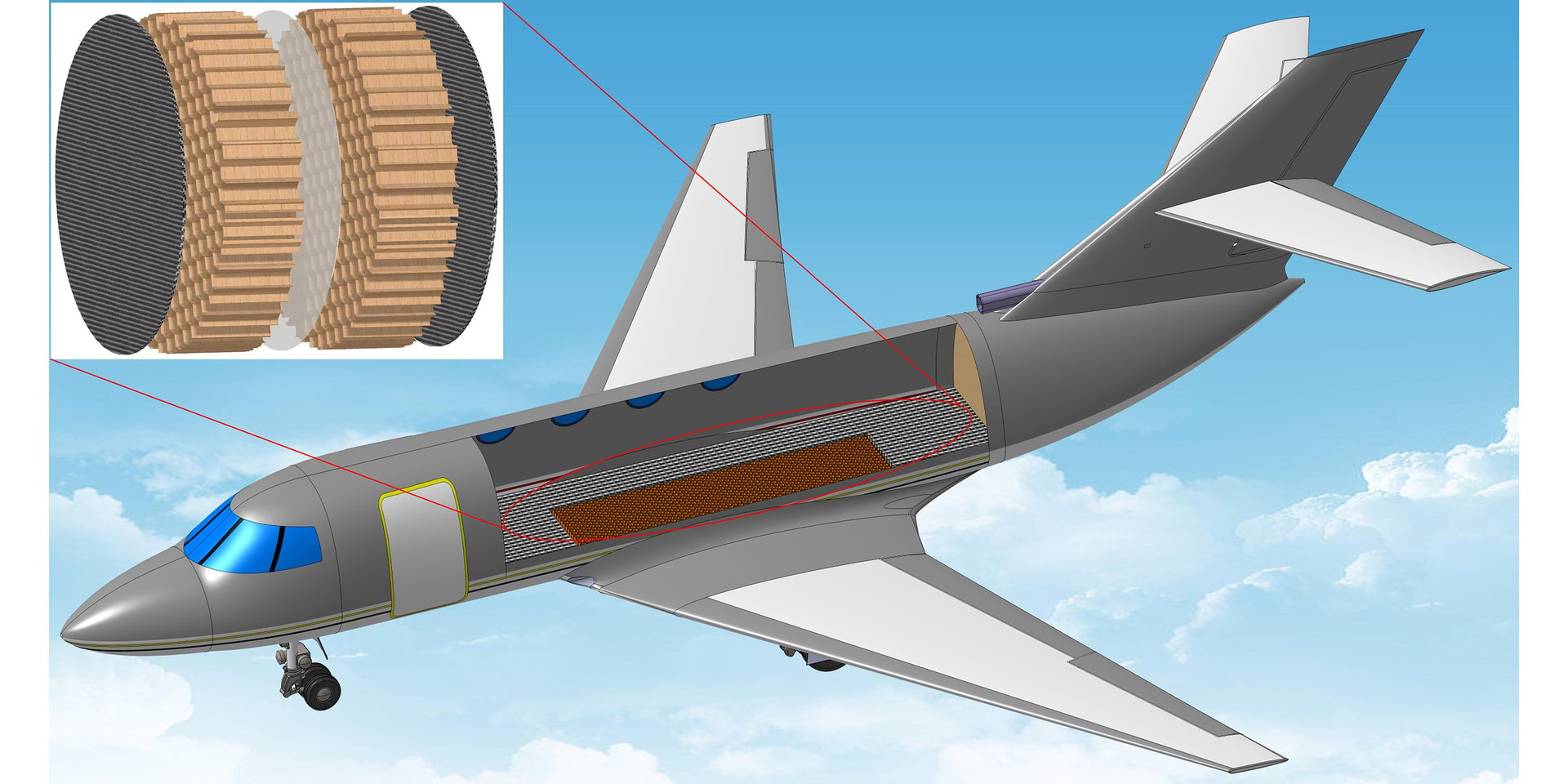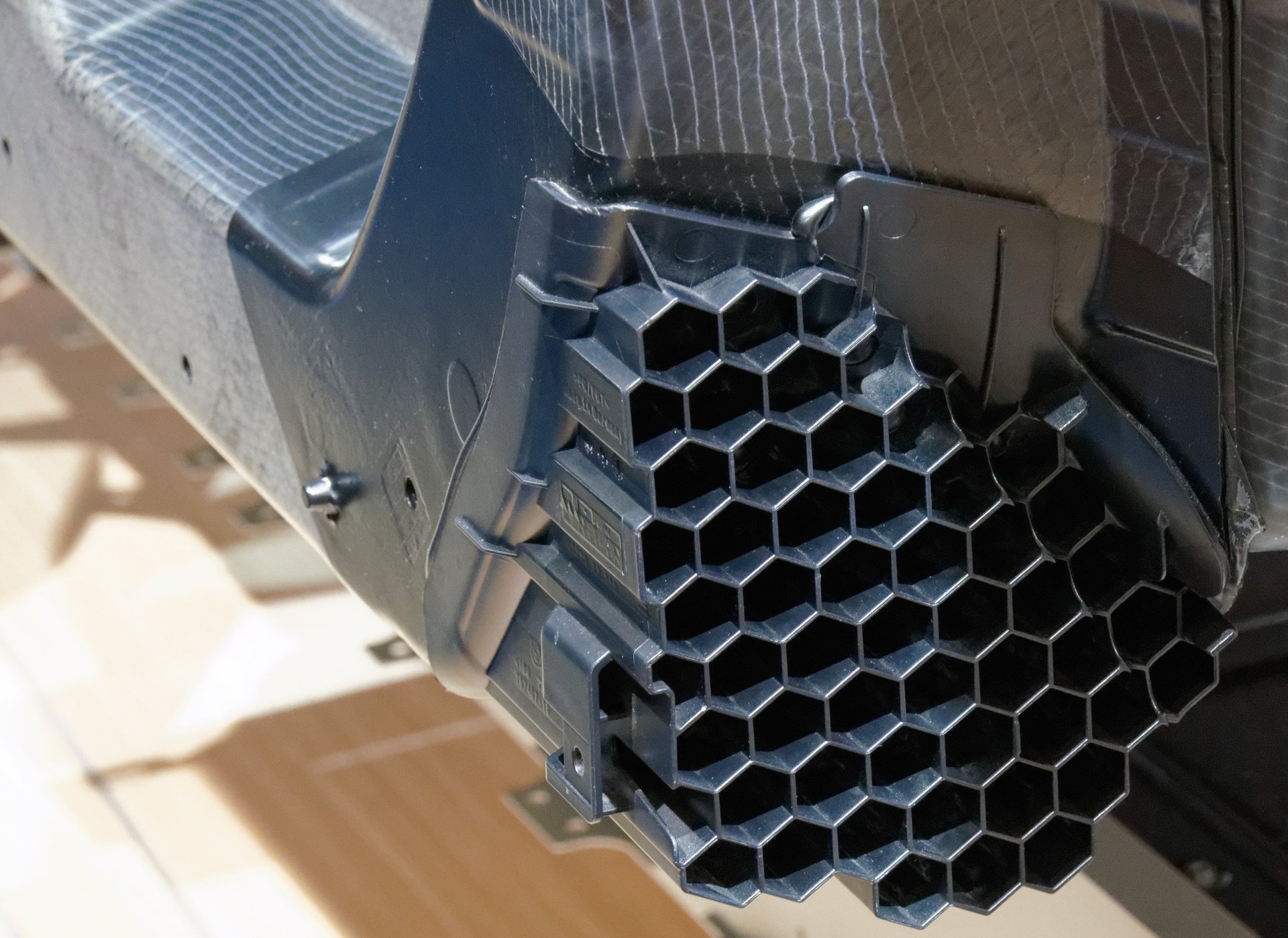This new man-made material could get rid of that horrible airplane noise
While airplane noise may not have any long-term effect on a person’s hearing abilities, many find the experience unpleasant. And the reason some of us have to suffer through this is because planes are built to be light.


While airplane noise may not have any long-term effect on a person’s hearing abilities, many find the experience unpleasant. And the reason some of us have to suffer through this is because planes are built to be light.
The ceilings and floors of airplanes use a honeycomb structure, which provides strength without adding much weight. Sadly, this structure is also very effective in letting sound through. So all the unwelcome sounds of jet engines and rotor blades get plugged right in to your ears.
There are two options to deal with the problem: come up with something that’s more effective than the honeycomb structure, or find an insulator that does the job without adding too much weight. There’s probably nothing that beats the honeycomb structure in its strength-to-weight ratio, so Yun Jing and his colleagues at North Carolina State University set out to look for a new insulator.

In a study published in Applied Physics Letters, they report developing just such a metamaterial, which are synthetically-created materials that have properties not found in nature. They are made by using regular materials assembled in such a way to grant them what physicists from a different era might have dubbed “miraculous properties.”
Yun’s metamaterial is made up of latex—yes, the same stuff used to make condoms—but it is tethered to the honeycomb structure in such a way that it has negative density. Yun told Quartz that the best way to understand negative density is to understand what happens at the surface of the metamaterial.
In the case of a normal material, when sound waves hit it, it will be pushed in the same direction that the sound waves are traveling. But Yun’s metamaterial moves in the opposite direction, reflecting the sound waves away. In this way, while adding only 6% weight to the honeycomb structure, the metamaterial is able to cut down noise by 20 decibels.
That, according to Yun, is the equivalent of reducing the noise of a busy road to the rumble of a washing machine.
Ping Sheng’s team at the Hong Kong University of Science and Technology was the first to produce such an acoustic metamaterial, but at the time it worked to block sounds in only a limited range of frequencies. Ping told Quartz that he was pleased with the new metamaterial’s wider range, because it goes a step towards potential applications in the industry.
Those applications are still a while away though. Yun’s testing was done on a small scale. Nick Fang of the Massachusetts Institute of Technology, a metamaterials expert, told Quartz that he would be keen to see the results of a wind-tunnel test on an airplane model that incorporates the metamaterial.
And Yun admitted that he does not have a price estimate yet, but he is looking forward to speaking to airplane manufacturers. Travelers who hate the sound of airplane noise will desperately hope that he is able to convince the industry to at least try using his metamaterial.